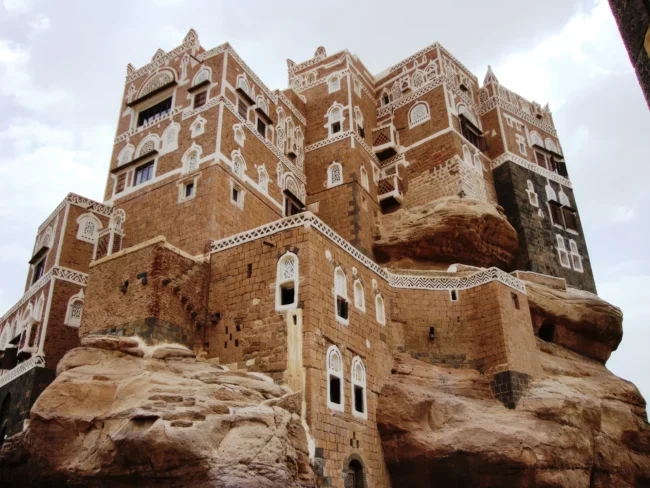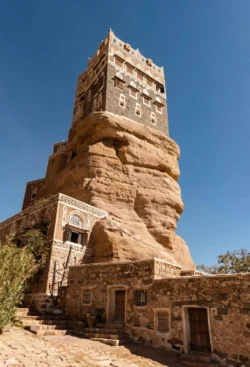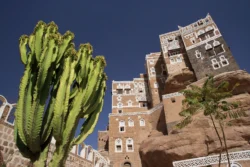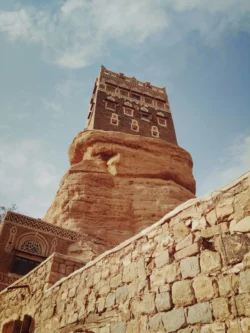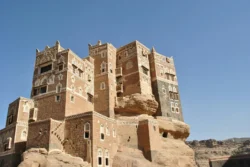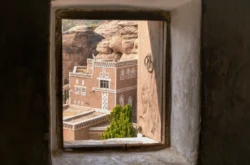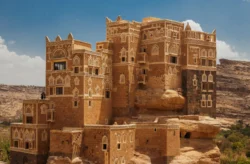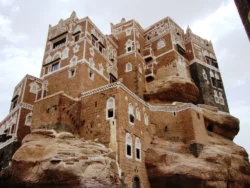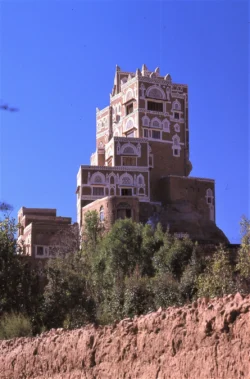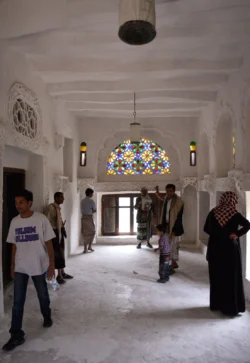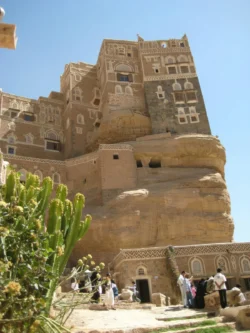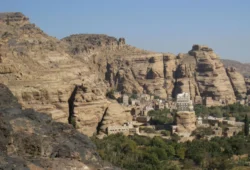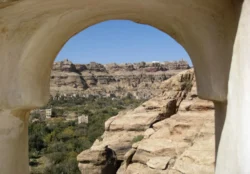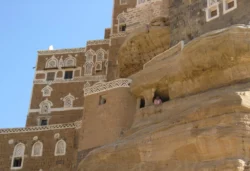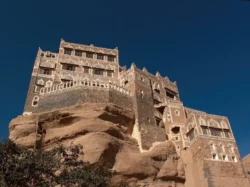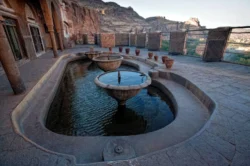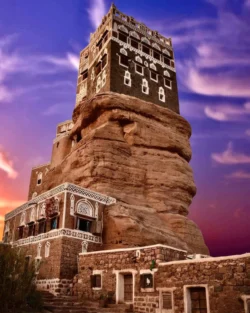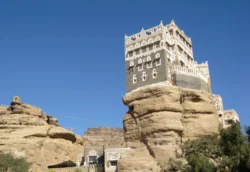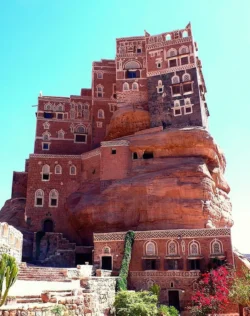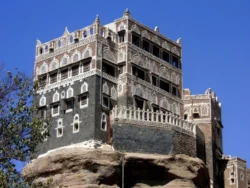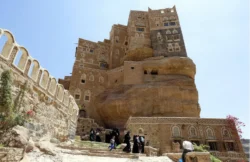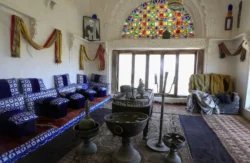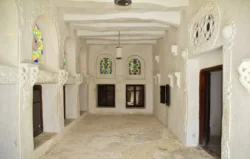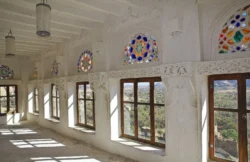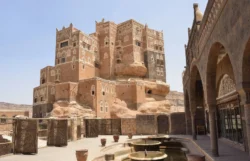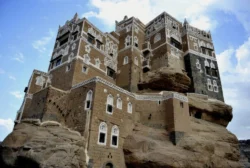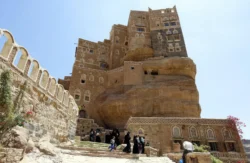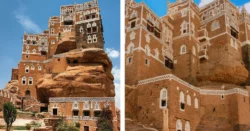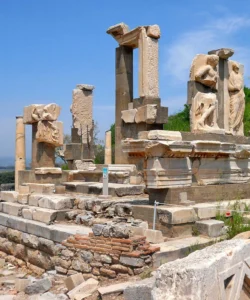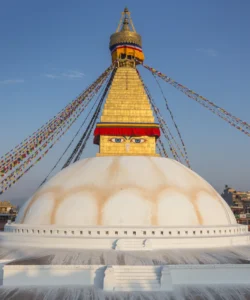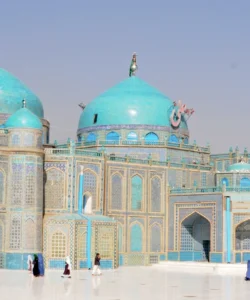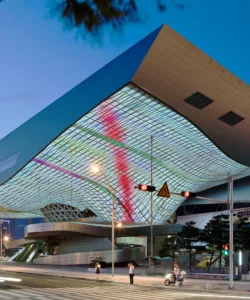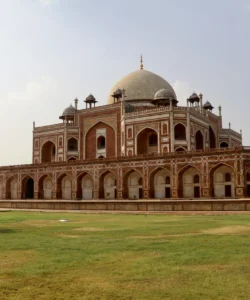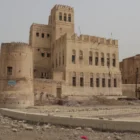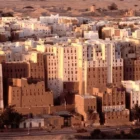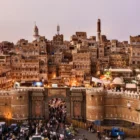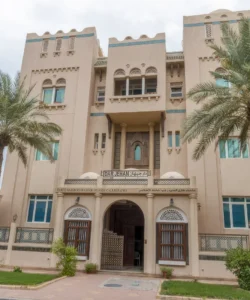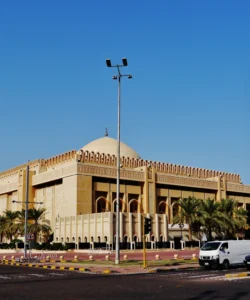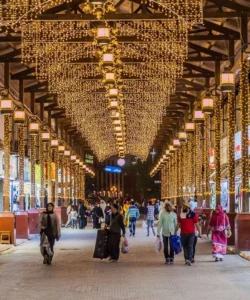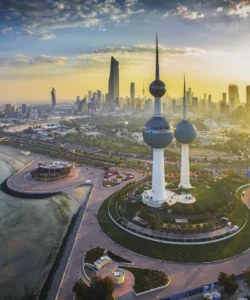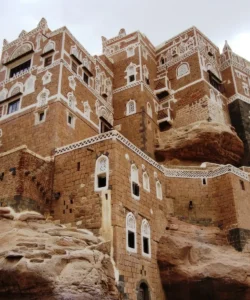Dar al-Hajar, often translated as the “Stone House” or “Rock Palace,” is an iconic former royal palace located in the picturesque Wadi Dhahr, approximately 15 kilometers (9.3 miles) northwest of Sana’a, Yemen. This unique architectural marvel is famously perched atop a dramatic rock pinnacle, seemingly growing out of the natural landscape. Built as a summer retreat, it stands as a prime example of traditional Yemeni architecture and a symbol of the country’s rich heritage.
Listen to an introduction about Dar al-Hajar
Name and Address
- Name: Dar al-Hajar (Arabic: دار الحجر, “Stone House” or “Rock Palace”)
- Address: Wadi Dhahr, near Sana’a, Yemen.
How to Get There
Important Note: Travel to Yemen, including Dar al-Hajar, is currently extremely difficult and unsafe for general tourism due to ongoing conflict and political instability. Most countries advise against all travel to Yemen. The information below is for historical and contextual understanding and is not a recommendation for travel.
- By Air: The closest major airport would be Sana’a International Airport (currently subject to severe restrictions and safety concerns).
- By Road: From Sana’a, Dar al-Hajar is about a 30-minute drive by taxi or private car. Due to security concerns, travel often requires armed escorts and permits, arranged through local fixers or tour operators.
- On-Site: The palace is best explored on foot once you arrive. A wide passage paved with large stones leads to the entrance.
Landscape and Architecture
Dar al-Hajar is a striking example of Yemeni architectural ingenuity, harmoniously integrated with its natural rock foundation within a fertile valley.
- Rock-Perched Palace: The most defining feature is the palace’s construction directly on top of a massive rock pinnacle. It appears to “grow out of the rocks,” a testament to the skill of its builders.
- Multi-Storied Structure: The palace consists of seven floors, designed to align with the natural formation of the rock. While the current structure was largely built in the 1920s as a summer retreat for Imam Yahya Muhammad Hamid ed-Din, it sits atop a much older structure dating back to 1786, built for the scholar al-Imam Mansour. Some historians even suggest it’s built on the ruins of an ancient Sabaean fortress from 3000 BCE.
- Yemeni Traditional Style: The architecture showcases characteristic Yemeni design elements, including intricate painted windows and edges, and a grand tower at its pinnacle.
- Interior Features: Inside, the palace features various rooms, including appointment rooms, guest rooms, storage areas, and a mafraj (a sitting room, typically on the highest floor) offering panoramic views. It also includes a traditional system for cooling water in earthenware jars and a very deep well.
- Wadi Dhahr Oasis: The palace is set within the lush, green Wadi Dhahr valley, known for its perennial greenery and cultivation of grapes, peaches, and quinces, creating a striking oasis in an otherwise arid landscape.
What Makes It Famous
- Iconic Symbol of Yemen: Dar al-Hajar has become an enduring symbol of Yemen, frequently featured on postcards, magazines, and even banknotes.
- Unique Integration with Nature: Its dramatic and seemingly impossible perch on a rock spire, blending seamlessly with the natural landscape, makes it an architectural marvel.
- Example of Yemeni Architecture: It is considered one of the greatest examples of traditional Yemeni architecture, showcasing the country’s unique building heritage.
- Royal Summer Retreat: It served as the summer residence for Imam Yahya Muhammad Hamid ed-Din, the Imam of Yemen from 1904 to 1948, offering a glimpse into the lives of Yemen’s former rulers.
- Photographic Landmark: Its distinctive silhouette against the sky and the lush valley makes it an incredibly popular subject for photographers.
Differences from Some Other Attractions
- Palace Built on a Natural Pinnacle: Unlike many palaces built on flat ground or fortified on hills, Dar al-Hajar is uniquely constructed on top of a single, prominent rock formation, making it appear as an organic extension of the natural landscape. This is distinct from fortified villages like those in the Haraz Mountains, which are built into or on mountain slopes, or cities like Shibam, which are a collection of mudbrick high-rises on a plain.
- Relatively Recent Royal Residence: While it has ancient foundations, the most visible and famous parts of Dar al-Hajar served as a royal residence relatively recently (early 20th century), offering a more modern historical context compared to ancient wonders that ceased to be inhabited centuries ago.
- Single Grand Structure vs. Urban Complex: Unlike the sprawling urban fabric of Shibam or the extensive monastic complex of Sumela Monastery, Dar al-Hajar is a singular, iconic palace building, standing alone as a masterpiece of design.
- Focus on Individual Architectural Ingenuity: Its fame centers more on the individual architectural ingenuity and aesthetic appeal of one building, rather than a large-scale urban plan or a vast natural phenomenon.
Dar al-Hajar Photos:
